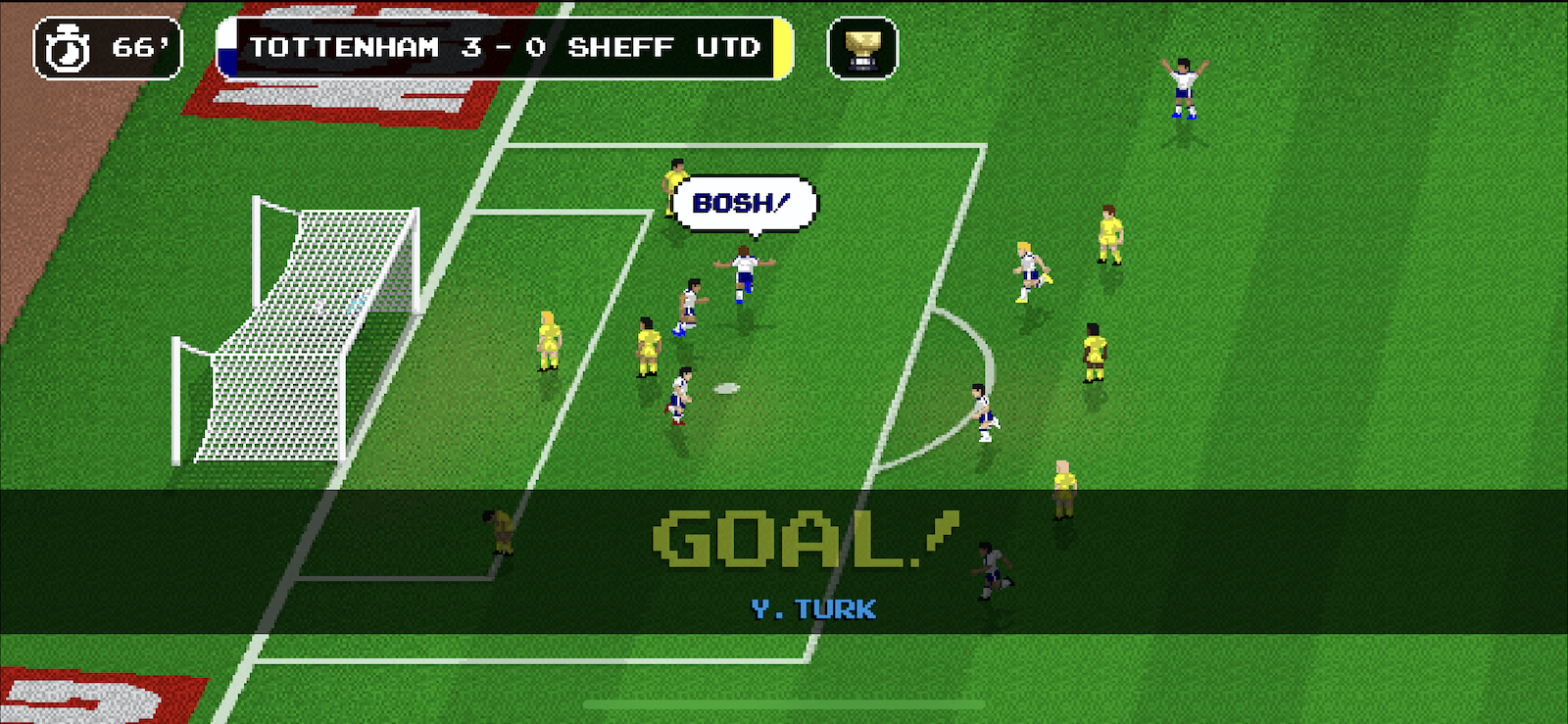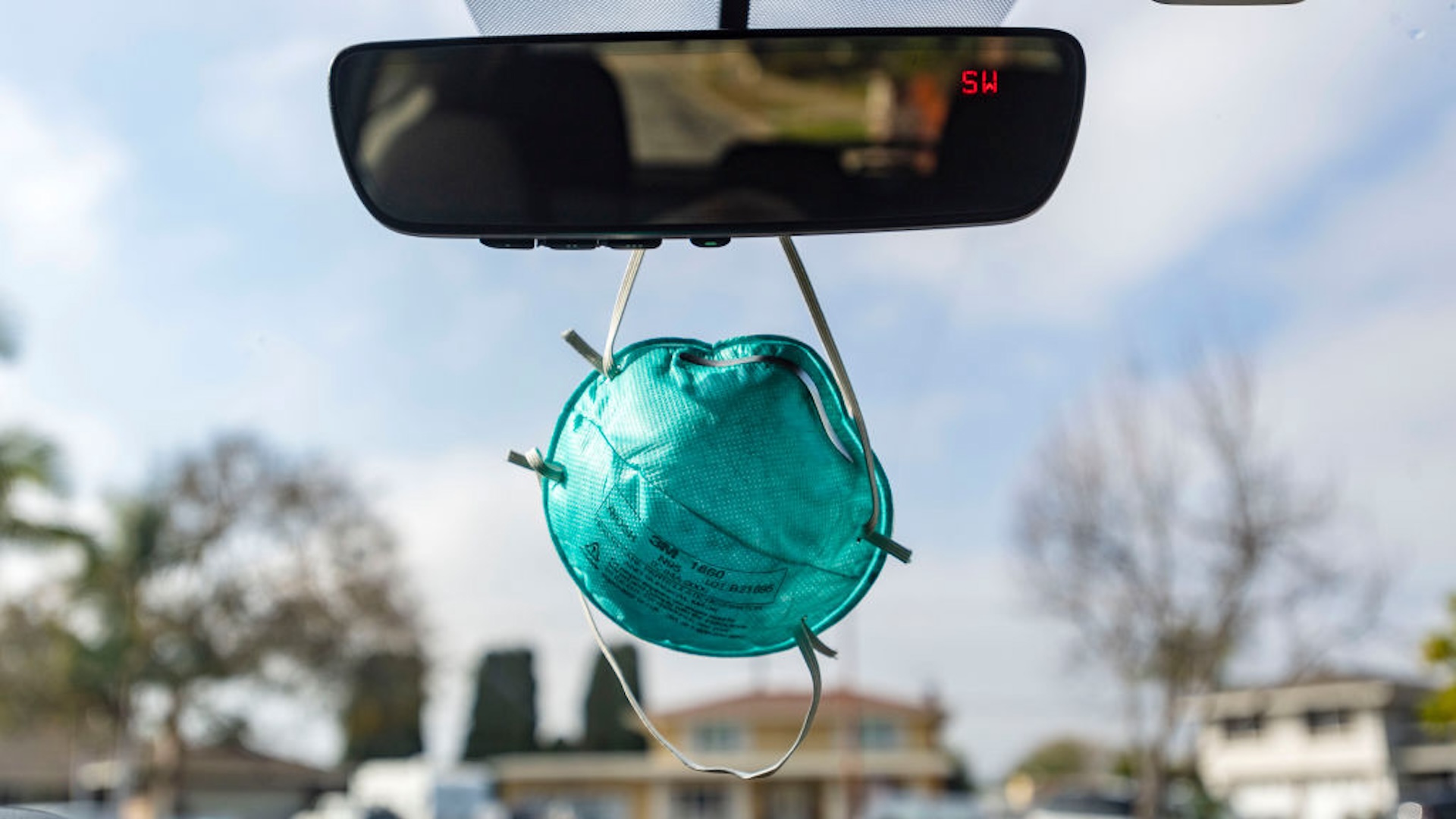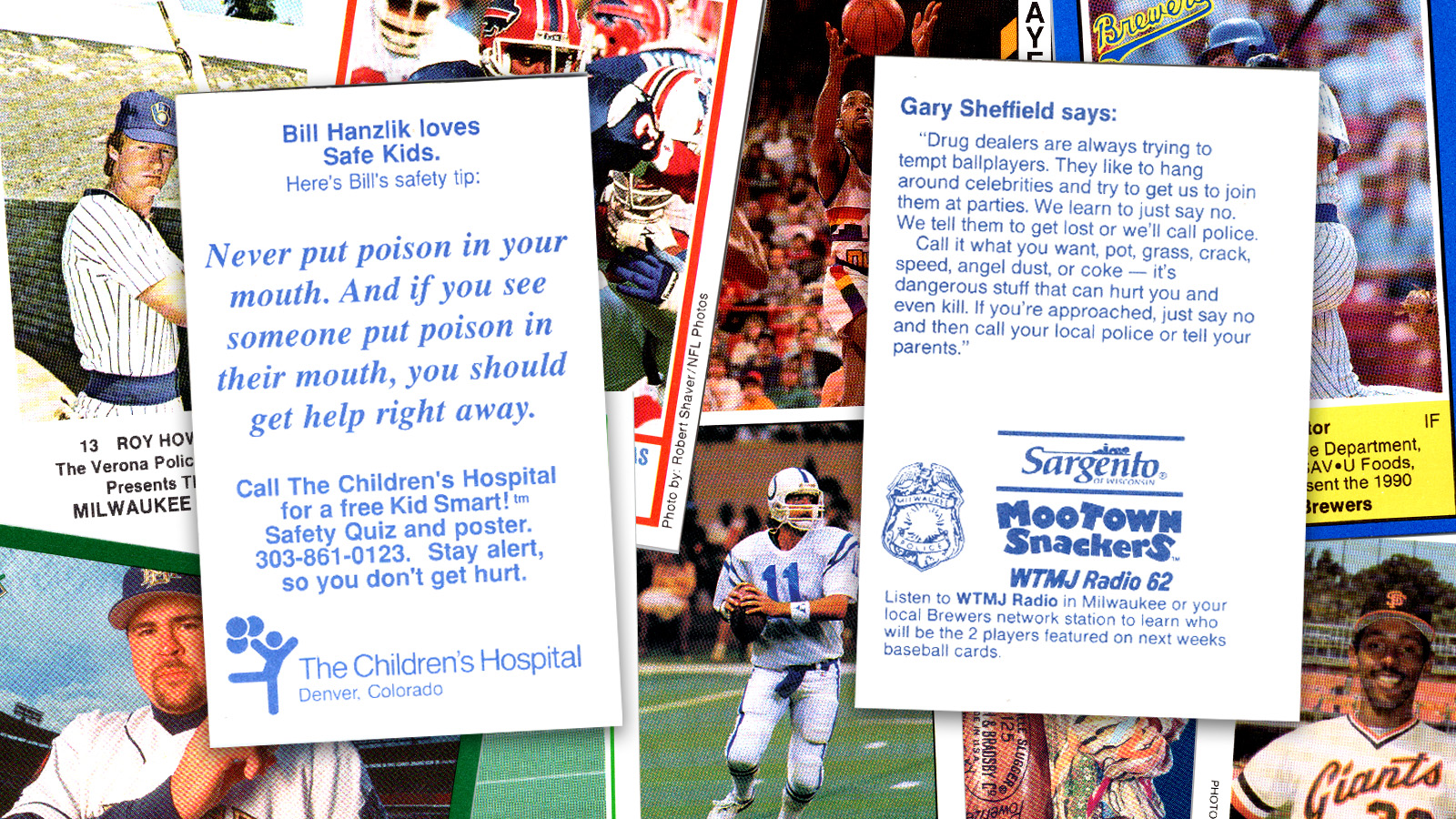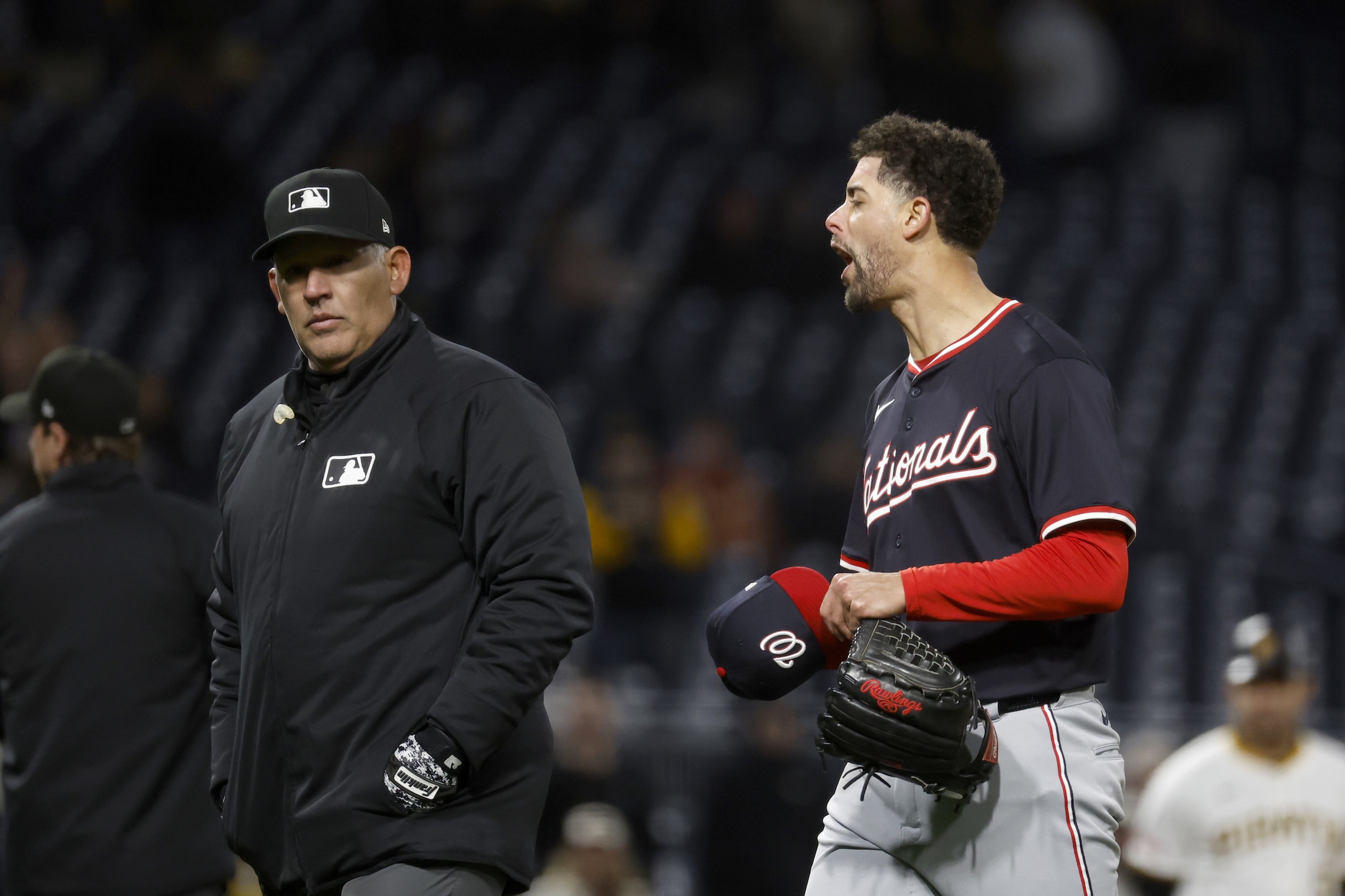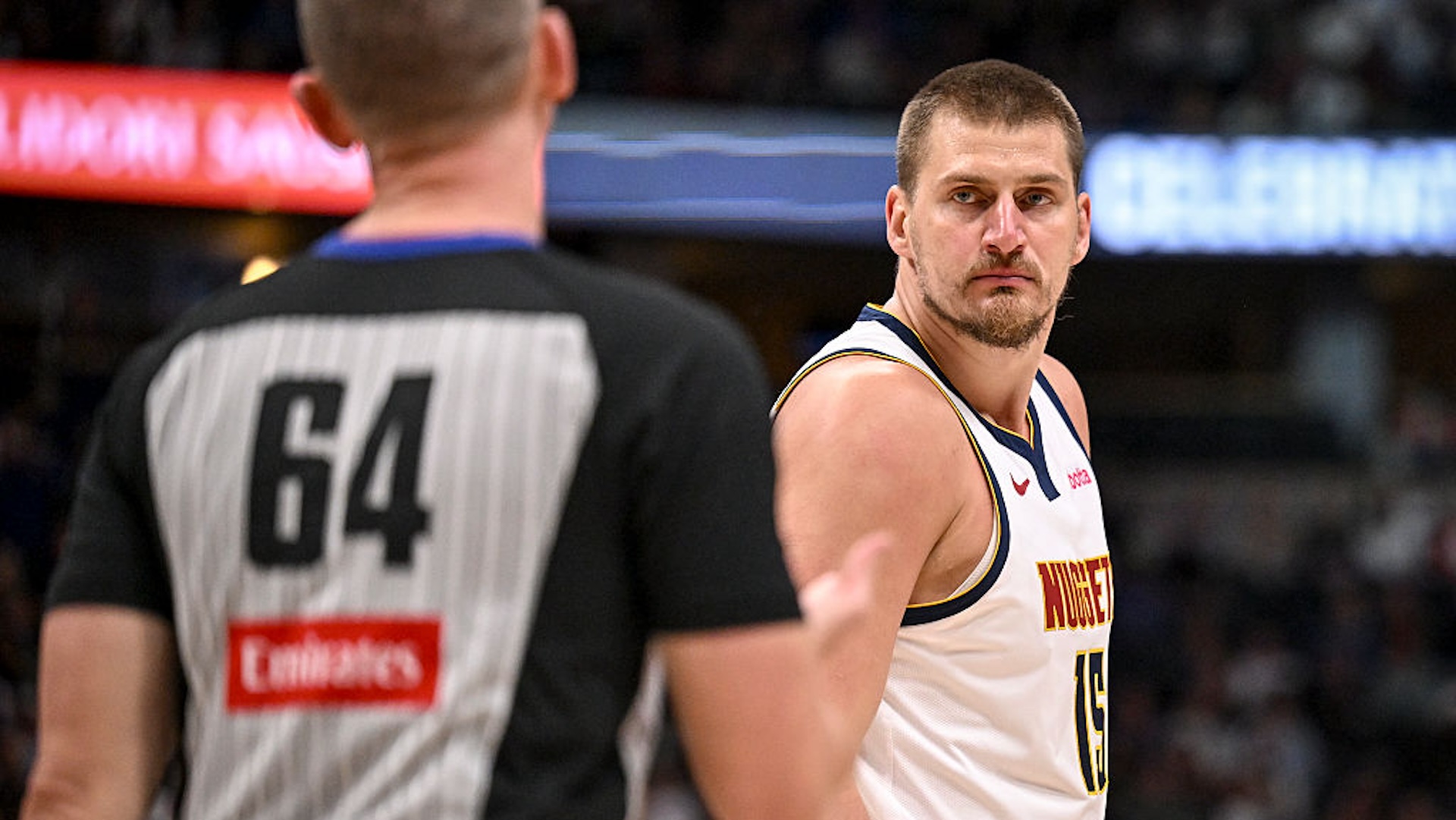Longtime Defector readers might recall that in October 2020, I recommended a little football game for your phone. Although I still play that game from time to time and have logged a total of 58 full seasons on it, I am back to recommend a new little game for your phone. This one involves soccer and was released two years ago.
Retro Goal was developed by the same company as Retro Bowl, which makes it funnier that I was unaware of its existence until this February. I only found it because I was bored and browsing the App Store. I bought it because I had a hunch that it would be a lot like Retro Bowl, and I was right. The two are very similar in gameplay but have different ways of maintaining your attention—this could be because they feature different sports.
(Disclaimer: Everything in this review is based off the nine-plus seasons I've logged in the unlimited mobile version of Retro Goal, which cost me $1.99. There is a freemium version, but I recommend paying for the full thing. New Star Games did not pay me to say this.)
If you've played Retro Bowl, you'll find that the gameplay here is a little more complex. For those new to this system: The controls are mainly swipes and flicks. You swipe in different directions anywhere on the screen to get your selected player running, and while you still flick to pass the ball, it requires more finesse than in the football version. Depending on where you place the pass, you can lead your teammate on a breakaway, or line up the yellow circle right above them to set up a header. It took me a few matches to realize that perfect accuracy is not ideal; you don't always want to trigger a header opportunity, especially when you're a defender passing to a midfielder who's about 30 yards away from the goal. A double tap on the screen will prompt a quick shot on goal, but the drawback is that you can't aim it as precisely. If this sounds too complicated, don't worry: There's a helpful tutorial that you can revisit in the settings to learn some of the more advanced moves.
The matches are quick. Each one will give you a few chances per half to advance the ball and create a scoring opportunity. Time slows down as you set up your pass, although it doesn't last forever—eventually an opponent will take the ball away if you're not fast enough. A turnover doesn't immediately end that chance, unless your opponent dribbles the ball into your half or clears it. Unlike Retro Bowl, you can play a little defense. A swipe without the ball will allow you to slide tackle, but be careful on the angle you take, because it's easy to get a yellow card or a straight red.
If your team is good or your opponent is bad, you'll naturally get more scoring chances. Once you put one in the back of the net, you'll get to celebrate while your player exclaims "Get in!" or "Have it!" or something like that. As you can see at the top of this post, however, the best celly is "Bosh!"
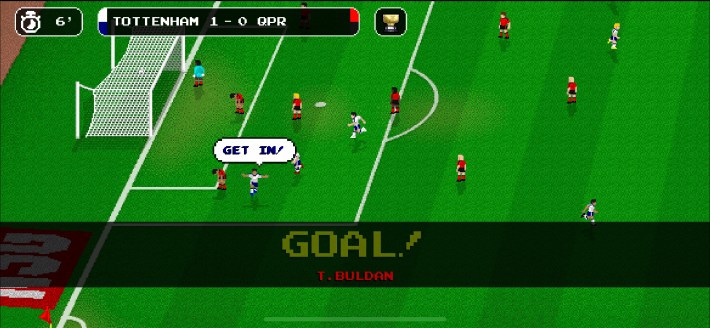
The gameplay is great, but the team construction is what makes it addictive. Retro Goal has no real storyline beyond choosing a name for your manager—I named mine "Samer," but you don't have to—but you start in charge of a middling team in a second-tier league, and are automatically given a few "star players" who are demonstrably more skilled than your no-name guys. These stars have different attributes and attitudes that can be improved through leveling up, which is accomplished by scoring goals and making tackles and other actions. Your job is to manage them while playing for promotion and the league cup. Random events happen pretty frequently, and give you the chance to earn a little more coin or boost team morale. Like in real life, your club can get relegated, but it's never happened to me because I'm built different.
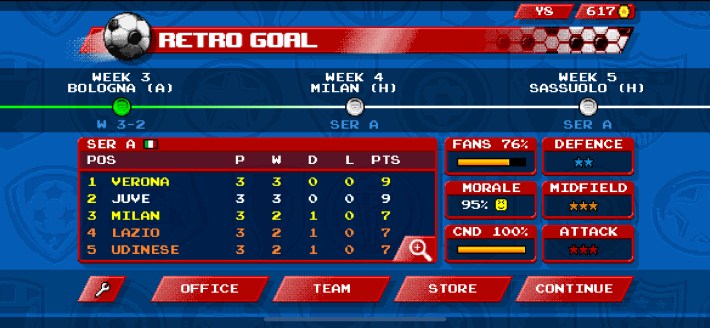
You can acquire better players through a few different methods: the transfer list, which requires in-game currency (not that hard to accrue); the youth system, which has a meter indicating when it'll generate a new prospect on a 10-game loan (you'll have the option to extend his contract); or a random event where another club will offer to loan you a player. Even in the unlimited version, you can spend actual money to buy elite players, but I've never done this and never felt like I had to in order to enjoy the game.
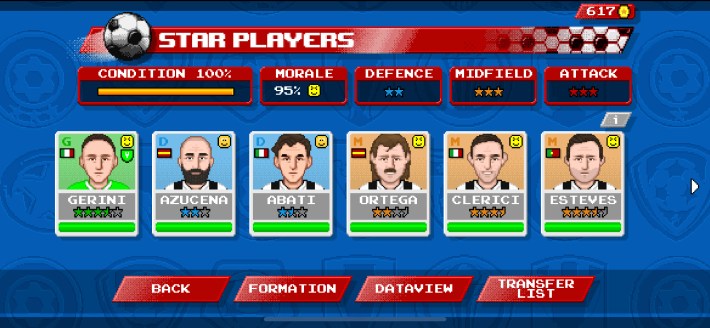
There are more decisions to be made in adjustments. You can change formations between and during matches, and drag and drop players to switch their alignment. If you build a big lead or fall behind, switch up the tactics in the middle of a game to be more aggressive or park the bus. I know all of this is obvious to people familiar with soccer; I'm trying to make this accessible to those who don't know much about soccer but might use Retro Goal as a way into the sport. Shout out to those people. Get in!
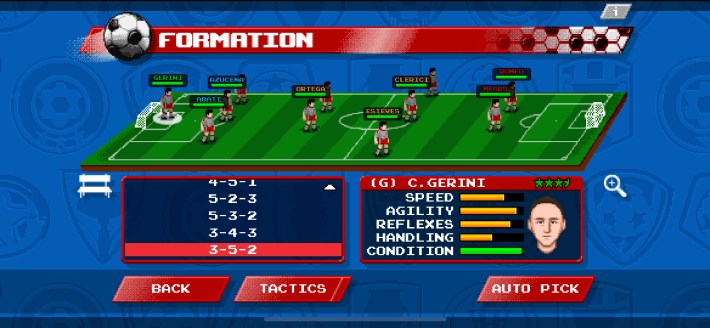
At the end of each season, you'll have an opportunity to switch clubs. The range of available destinations depends on your performance, but are also somewhat random. In one of my seasons, I won the treble but still didn't have every club as an option. It happens.
Outside of career mode, Retro Goal features a "global champions" mode—the World Cup but by a legally unactionable name. You'll pick a country then have a fixed budget to put together a team. From there, you'll play in the group stage and hopefully advance. I haven't played much of this mode.
If I wanted to pick nits, I'd gripe about the limited player customization. It'd at least be nice to be able to change the players' names like you can in Retro Bowl. And as long as I'm complaining, I'd like to be able to adjust the uniforms and appearances, too. Maybe the developer would consider an update timed to the upcoming Women's ... Global Champions this summer. Just throwing out an idea.
A larger issue is that it's not that hard to put together a formidable team, and it doesn't even require 11 star players. I've found the quickest path to success is finding just one striker with a high speed attribute, investing in a good keeper, and adding a couple of defenders and midfielders in the two- and three-star range. Set up that forward with plenty of goal-scoring opportunities, and he'll tend to burn through the defense regularly.
But you'll still have to extend contracts and pay more each time around. That factor keeps things fresh. Every so often when one of your players is doing well, a team will offer to buy them at an amount higher than their displayed value, so there's a benefit to not relying on just one goal-scorer. Again, this is getting finicky, because Retro Goal isn't a game that should be played for three uninterrupted hours. It's best as a way to kill time in shorter sessions. The ideal scenarios for playing this would be while commuting, or for about an hour at home while listening to a podcast. (The game's music is extremely catchy, but sometimes a change of pace is nice.) Players of Football Manager will find Retro Goal to be a bit basic, but those looking for a phone distraction will find themselves successfully distracted. Bosh.
